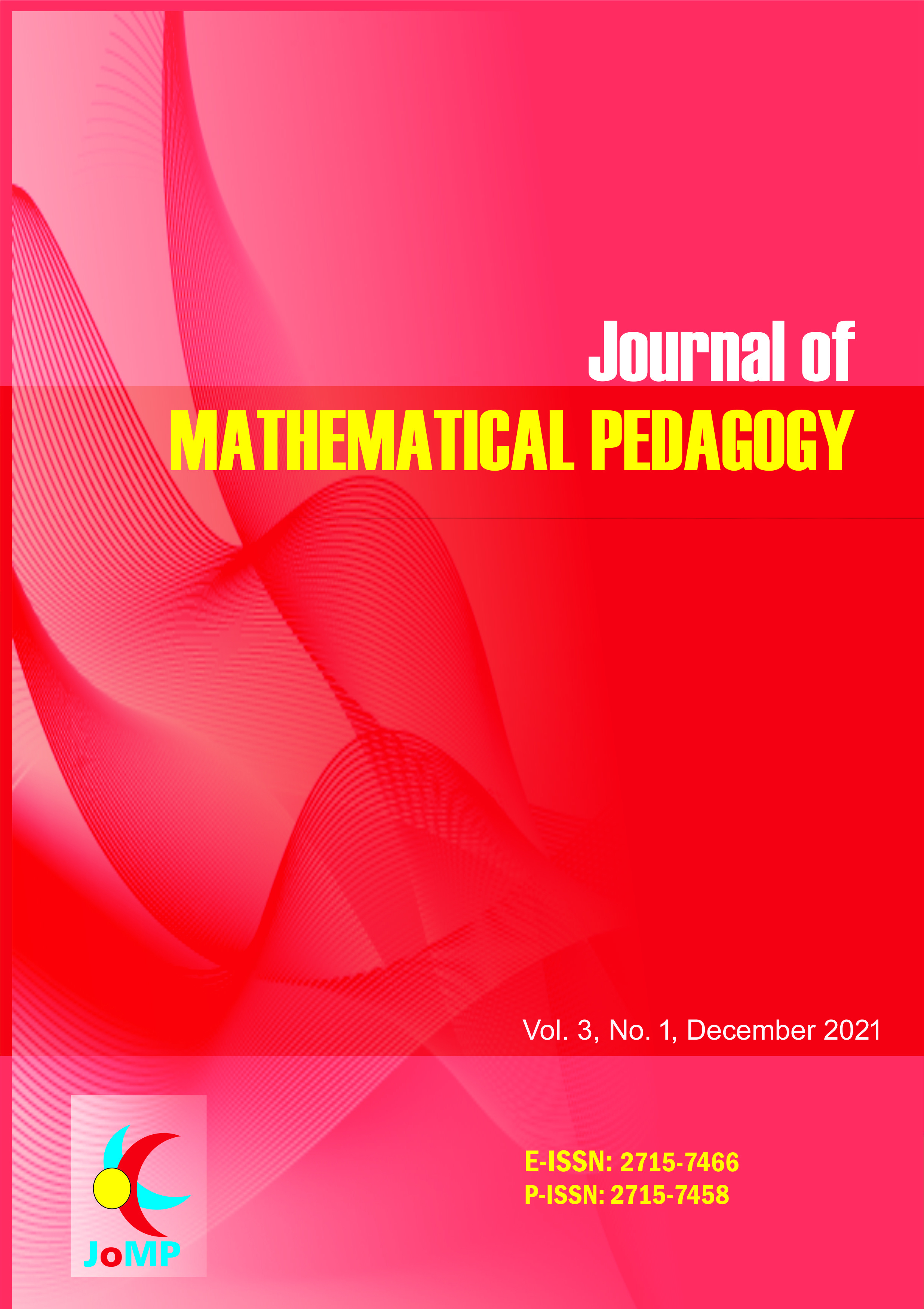Students’ Critical Thinking in Solving Statistical Problems Collaboratively
DOI:
https://doi.org/10.26740/jomp.v3n1.p45-54Keywords:
Critical thinking, Collaborative problem solving, StatisticsAbstract
Critical thinking and collaborative is an ability that is needed by students in 21st century education. The purpose of this research is to describe students' critical thinking skills in solving statistical problems collaboratively. The type of research used in this study is descriptive research with a qualitative approach. The subjects of this study were 4 grade 11 students of SMA Negeri in Mojokerto where students would work in pairs or collaborate with 2 people to solve statistical problem-solving questions. The research methods used are critical thinking skills tests in collaborative statistical problem solving and interviews. The results obtained from this study showed that students' critical thinking skills in solving statistical problems collaboratively were divided into two categories, namely high and low. Subjects who have a high critical thinking ability category are able to fulfill the indicators of interpretation, analysis, and inference. Collaboration ability in solving problems goes well. Collaboration exchanges information and gives advice to each other in solving the given problem. Subjects who have low critical thinking ability category are less able to interpret the problem, and fulfill the indicators of analvsis and inference. Collaboration ability in solving problems is less.
References
Albert, L. R., & Kim, R. (2013). Developing creativity through collaborative problem solving. Journal of Mathematics Education at Teachers College, 4(2).
Asyari, M., Al Muhdhar, M. H. I., Susilo, H., & Ibrohim. (2016). Improving critical thinking skills through the integration of problem based learning and group investigation. International journal for lesson and learning studies, 5(1), 36-44.
C Graesser, A., Foltz, P. W., Rosen, Y., Shaffer, D. W., Forsyth, C., & Germany, M. L. (2018). Challenges of assessing collaborative problem solving. Assessment and teaching of 21st century skills: Research and applications, 75-91.
Clark, H. (1996). Using Language. NY: Cambridge University Press.
Clark, H. and Brennan, S. (1991). Grounding in Communication. In L.B. Resnick, J.M. Levine, and S.D. Teasley (eds.), Perspectives on Socially-Shared Cognition. APA, Washington, D.C
Ennis, R. H. (2015). Critical thinking: A streamlined conception. The Palgrave handbook of critical thinking in higher education, 31-47.
Facione, P. A., & Facione, N. C. (2013). Critical thinking for life: Valuing, measuring, and training critical thinking in all its forms. Inquiry: Critical thinking across the disciplines, 28(1), 5-25.
Garside, C. (1996). Look who's talking: A comparison of lecture and group discussion teaching strategies in developing critical thinking skills. England: Taylor & Francis
Greene, R. W. (1999). The explosive child (p. 0). HarperCollins World.
Karim, K., & Normaya, N. (2015). Kemampuan Berpikir Kritis Siswa dalam Pembelajaran dalam Pembelajaran Matematika dengan Menggunakan Model Jucama di Sekolah Menengah Pertama. EDU-MAT: Jurnal Pendidikan Matematika, 3(1).
Laal, M., Naseri, A. S., Laal, M., & Khattami-Kermanshahi, Z. (2013). What do we achieve from learning in collaboration?. Procedia-Social and Behavioral Sciences, 93, 1427-1432.
OECD, R. (2019). Programme for international student assessment (PISA): Results from PISA 2018. OECD, 1-10.
Pambudi, D. S., Budayasa, I. K., & Lukito, A. (2020). The role of mathematical connections in mathematical problem solving. Jurnal Pendidikan Matematika, 14(2), 129-144.
Rahma, S. (2017). Analisis berpikir kritis siswa dengan pembelajaran socrates kontekstual di SMP negeri 1 padangratu lampung tengah (Doctoral dissertation, UIN Raden Intan Lampung).
Rinadin. (2020). The effect of the collaborative problem solving on learning result reviewed from the ability of mathematic critical thinking of class VII. Admathedust, (7), 24-28.
Sanders, M., & Moulenbelt, J. (2011). Defining critical thinking: How far have we come?. Inquiry: Critical Thinking Across the Disciplines, 26(1), 38-46.
Saputra, M. D., Joyoatmojo, S., Wardani, D. K., & Sangka, K. B. (2019). Developing critical-thinking skills through the collaboration of jigsaw model with problem-based learning model. International Journal of Instruction, 12(1), 1077-1094.
Siswono, T. Y. E. (2018). Pembelajaran matematika berbasis pengajuan dan pemecahan masalah. Bandung: Remaja Rosdakarya.
Stadler, M., Herborn, K., Mustafi?, M., & Greiff, S. (2020). The assessment of collaborative problem solving in PISA 2015: An investigation of the validity of the PISA 2015 CPS tasks. Computers & Education, 157, 103964.
Sukmadinata, N. S. (2006). Metode Penelitian Pendidikan. Bandung: PT Remaja Rosdakarya
Wardhani, S. (2008). Analisis SI dan SKL mata pelajaran matematika SMP/MTs untuk optimalisasi tujuan mata pelajaran matematika. Yogyakarta: PPPPTK.
Winarti, A., Rahmini, A., & Almubarak, A. (2019). The effectiveness of multiple intelligences based collaborative problem solving to improve critical thinking. Jurnal Kependidikan, 3(2), 172-186.
 Abstract views: 138
,
Abstract views: 138
, PDF Downloads: 238
PDF Downloads: 238





